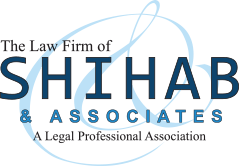In this article, we discuss the effect that USCIS regulations have on immigrant investors whose operations may need a course correction in order to fulfill the requirements of the EB-5 program–and how best to proceed in light of them. In another article, we detail the difficulty in the program that makes this an issue, and USCIS’s reaction to it. The agency has issued guidance that is at best insufficient and dangerous at worst. The potential issues and inadequate government response to them necessitate independent analysis.
An example may prove illustrative: a typical EB-5 investor is running a restaurant. Over a year into the conditional residence period, the business isn’t doing very well. A local university has opened a branch campus nearby, drawing in a few major restaurant chains. Students and original customers alike are flocking to these other restaurants. However, no new coffee-houses, where students spend a great deal of time and money, have appeared yet. In this case, converting the restaurant into a coffee-house would seem like the best bet. However, the I-526 business plan specifically envisioned a sit-down restaurant with tipped waiters.
Assuming the investor wishes to avoid the negative consequences of filing a new I-526 (detailed in the other article), the options are few. The most obvious one is to simply record the changes in the I-829 petition to remove residence conditions. However, this will intrigue a USCIS officer and invite serious scrutiny. Even if the evidence of job creation is rock-solid, this could lead to a denial. (Of course, failure to record such changes is even riskier.) The position apparently taken here by the government is “if there were changes, they had better have been worth it, though we reserve the right to deny.” This seems unfair–and in fact is not necessitated by law. It is due only to an interpretation of USCIS regulation, which is often much stricter than statute.
The “no changes” requirement is an interpretation the following: “the business plan in the I-526 petition must serve as the basis for determining at the I-829 stage whether the investment has been sustained throughout conditional residency and that at least ten jobs have been created (or will be within a reasonable period of time) as a result.” However, statute does not necessitate a job creation test at the I-829 stage. (This could be why the “within a reasonable period of time” standard exists.) While the job requirement itself does not appear subject to challenge, the reasoning above does.
Immigrant investors should therefore not have to fear denial on the grounds that they deviated from the approved business plan. But these denials do happen, and while some immigrant investors could be in a good position to challenge them, there is a better option than waiting for the condition removal stage. USCIS’s view of the case could be gauged in the form of an I-526 amendment. If the amendment is sent in the style as a progress report with good news of job creation, the government’s bias against business plan changes could be allayed. On the other hand, if the government reacts angrily, the investor would still have time to weigh his or her options. While the agency thinks business plan changes are grounds for I-829 denial, nothing in the regulations say anything about using those changes as grounds for revocation of conditional residence.
The preceding discussion applies (indirectly) to regional center investors. True, the ability to rely on “indirect jobs” (and the significant leeway attached to how and where they spring forth) prevents the job creation requirement from being a reason to deviate from the business plan. However, regional centers still sometimes fail to create enough jobs (or simply go under). In this sort of situation, an immigrant investor could use an I-526 petition amendment to explain what went wrong and show what plans he or she has to fulfill the requirements of the program. This seems sensible because of the “reasonable period of time” standard–and the fact that regional center failure is, at least on paper, someone else’s fault. Not allowing the immigrant investor the chance to pick things up after these difficulties is not only unfair, it also goes against the spirit and intent of the EB-5 program. A denial in these circumstances would be ripe for legal challenge.
The advice in this article should not be seen as applicable in all situations. If any of this applies to your case, it is imperative that you seek legal representation. The attorneys at The Law Firm of Shihab and Associates have never lost an EB-5 case.

